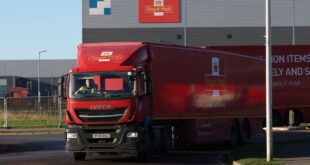As we have come to learn, disruption is the new normal. And every quarter, the FTSE reshuffle serves as a reminder of the increasingly choppy factors that weigh on a company’s fortunes.
Having narrowly avoided relegation in March, Royal Mail slid out of the FTSE 100 last week largely because of its failure to adapt. Beleaguered by changing consumer behaviour and growing competition, the company desperately needs to accelerate its transformation plan.
Centrica, which moved from the mid-cap 250 into the top 100, has been more fortunate. Post-tax profits at the energy giant are set to more than double to £600m this year, mainly as a result of soaring prices and its traders cashing in on volatility. There are significant uncertainties over the rest of the year, but Centrica has proven to be keen to invest in newer technology and platforms to offer new services and minimise the impact of threats.
Historically, most industry sectors have had to adapt to a major “event” at least every six months. This rate is now doubling, if not tripling – not only at an increased pace, but with challenges bigger and more complex than ever before. Whether that change is a windfall tax or sudden supply chain disruption, firms too slow to adapt risk becoming irrelevant; speed and agility are the new currencies of business.
Most organisations are able to identify what the issues are, but then try to fix them with more methodology, reporting and governance. This is a trap. The biggest barrier to business agility is not methodology, but the inability to make timely decisions caused by a lack of insight and actionable data.
Thriving organisations define success at the outset, ensuring the implications of any change are understood by key stakeholders. To bring about real change, businesses need to recognise the degree of alignment between four crucial factors affecting their ability to achieve business objectives: the external and internal environment, mode of operation, internal capabilities, and the complexity of transformation they are trying to achieve. Getting to grips with that alignment, combined with the power of data, should provide leaders with a model for predicting an organisation’s ability to achieve the change our times require.
Leaders should always consider the effect of any complex change programme, such as a digital overhaul or major product shift, on the wider organisation. Most transformations impact at least 60 per cent of “business as usual” teams – in short, they can’t be ignored. Unless companies recognise the point where it’s no longer possible to rely on legacy ways of working and devote more resources to change-related activities, data show us that this is where many projects tend to fail.
ASOS, which joined the FTSE 250 last week after being the star of the AIM index, has continually proved itself agile enough to adapt to changing trends. From the start of the pandemic, the company focused on the shopping experience, accelerating its focus on digital technology while investing in the new products demanded by its customers.
What separates top performers is their ability to continually adapt to changes and transform themselves. They’re not afraid to undertake disruptive innovation projects, even if they are risky and may not deliver short-term returns. It is then unsurprising that the risers in the FTSE indices are those that have been able to exploit opportunities and strengths while minimising the impact of threats.
Source link



